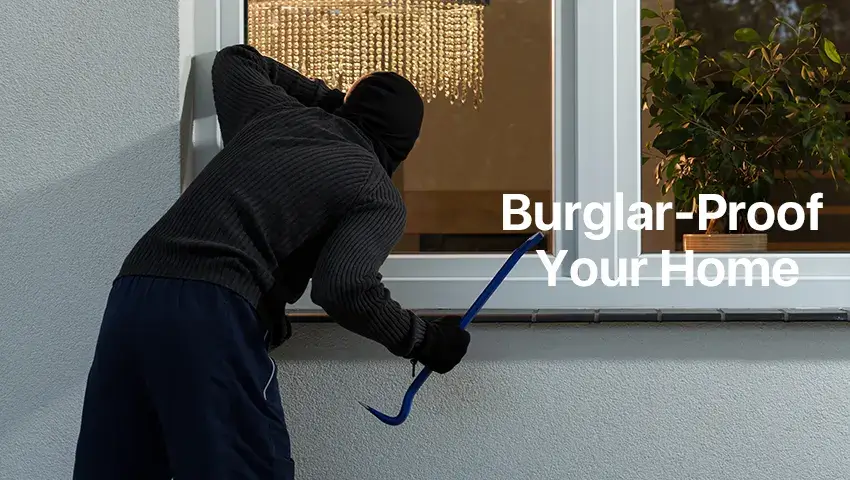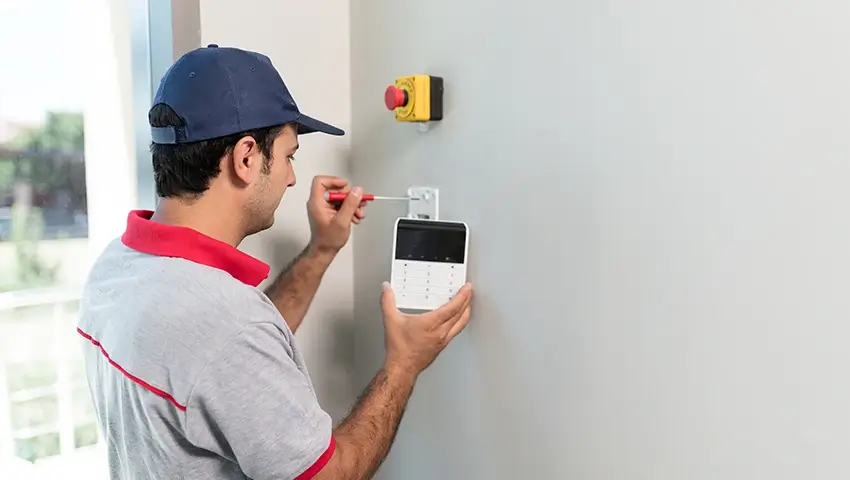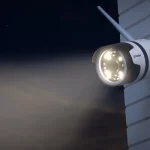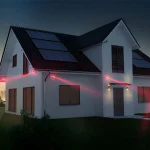Mastering how to burglar-proof your home transforms it from a potential target into a formidable deterrent, safeguarding your family and valuables through a combination of strategic security enhancements and proactive crime prevention measures.
Contents
How Burglars Think
To effectively protect your home, it’s essential to understand how burglars operate.
Common Tactics Used by Burglars:
- Identifying Easy Entry Points: Most burglars enter through unlocked doors, first-floor windows, or garage doors.
- Observing Patterns: Some burglars observe the daily routines of homeowners to strike when the house is empty.
- Looking for Vulnerabilities: Overgrown bushes, poorly lit exteriors, and open windows make your home more attractive to criminals.
By understanding these tactics, you can start addressing potential weaknesses in your home’s security.
Securing the Main Entry Points
Since most burglars enter through the front door, back door, or windows, it’s essential to strengthen these primary access points.
1. Fortify Your Doors
Your front door is the first line of defense. Unfortunately, many break-ins happen because doors are easy to kick in or pick.
- Install Solid Core Doors: Unlike hollow-core doors, solid wood or metal doors are harder to break.
- Upgrade to Deadbolt Locks: Choose a high-quality deadbolt with a long throw (at least one inch).
- Reinforce the Door Frame: Consider adding a strike plate and door reinforcement hardware to withstand forced entry.
- Use Smart Locks: These locks can be controlled via smartphone and often include features like auto-lock and keypad entry.
2. Secure Windows
Windows are another common entry point for burglars, especially on the ground floor.
- Install Window Locks: Reinforce weak latches with window locks.
- Use Shatterproof Glass or Window Film: This makes it harder for burglars to break the glass.
- Add Window Sensors: These devices alert you if a window is opened or tampered with.
- Consider Window Bars (if necessary): In high-risk areas, window bars provide an extra layer of protection.
3. Don’t Forget Garage and Sliding Doors
- Secure the Garage: Use a smart garage door opener or lock the interior garage door.
- Add a Dowel or Security Bar to Sliding Doors: This prevents burglars from sliding the door open, even if they bypass the lock.
Enhancing Outdoor Security
1. Light Up Your Exterior
Burglars prefer working in the dark to avoid detection. Proper lighting can make your home a less attractive target.
- Install Motion-Activated Lights: These lights turn on when movement is detected, surprising potential intruders.
- Use Smart Lighting: Set schedules to mimic your presence when you’re away.
- Illuminate Entry Points: Ensure all doors, pathways, and dark corners are well-lit.
2. Landscaping for Security
Your landscaping choices can either protect or expose your home to burglars.
- Trim Trees and Shrubs: Keep them away from windows to eliminate hiding spots.
- Use Thorny Bushes: Plant thorny bushes under windows to make entry more difficult.
- Maintain Clear Sightlines: Avoid blocking the view of your front door and driveway.
3. Fencing and Gates
- Install Secure Fences: Use sturdy fencing with lockable gates.
- Anti-Climb Features: Consider adding spikes, anti-climb paint, or trellis panels for added protection.
Installing a Home Security System
A home security system is one of the best investments you can make to burglar-proof your home.
1. Types of Security Systems:
- DIY Security Systems: These are easy to install and often come with mobile app integration.
- Professionally Monitored Systems: These systems alert a monitoring center, which can contact law enforcement if needed.
2. Essential Features to Look For:
- Cameras: Install indoor and outdoor security cameras with night vision and motion detection.
- Door and Window Sensors: These trigger alarms when opened unexpectedly.
- Smart Locks and Video Doorbells: These allow you to monitor and control access remotely.
- Loud Sirens: A loud alarm can scare off burglars and alert neighbors.
Creating the Illusion of Occupancy
Burglars often look for homes that appear empty. Here’s how to create the illusion that someone’s always home:
- Use Timers for Lights and Electronics: Set lights, TVs, and radios to turn on and off at different times.
- Leave a Car in the Driveway: If possible, leave a car visible to make it seem like someone is home.
- Pause Mail and Package Deliveries: A pile of mail or packages is a clear sign you’re away.
Securing Valuables Inside the Home
Even if a burglar gets inside, you can minimize the damage by securing your valuables.
- Use a Safe: Store cash, jewelry, and important documents in a heavy, bolted-down safe.
- Hide Valuables in Unusual Places: Avoid obvious hiding spots like drawers and closets.
- Consider GPS Trackers: Attach GPS trackers to high-value items like electronics or bicycles.
Leveraging Community Security
There’s strength in numbers. By working together, you and your neighbors can enhance security in your area.
- Join or Start a Neighborhood Watch: Organize regular patrols and meetings to discuss local safety concerns.
- Get to Know Your Neighbors: A close-knit community is more likely to notice and report suspicious activity.
- Use Shared Security Tools: Some neighborhoods use shared security cameras or apps to stay informed.
Common Home Security Mistakes to Avoid
Even the best security systems can fail if you overlook these common mistakes:
- Forgetting to Lock Doors and Windows: Always double-check locks before leaving or going to bed.
- Hiding Spare Keys in Obvious Places: Avoid leaving keys under mats, flowerpots, or fake rocks.
- Leaving Tools or Ladders Outside: These can be used by burglars to gain entry.
- Neglecting Security System Maintenance: Regularly test alarms, cameras, and other devices to ensure they’re working.
FAQs
1. What is the most common way burglars break into homes?
The most common entry points for burglars are unlocked doors, windows, and garage doors. They often look for easy access on the ground floor or exploit homes with poor lighting and minimal security.
2. Are security cameras really effective in preventing break-ins?
Yes, security cameras are a powerful deterrent. Burglars are less likely to target homes with visible cameras because they increase the risk of being identified and caught.
3. Should I hide my valuables in a safe?
Yes, using a safe is highly recommended. Choose a heavy, fireproof safe that can be bolted to the floor to securely store cash, jewelry, and important documents.
4. How can I make my home look occupied when I’m on vacation?
You can use timers to automatically turn lights, TVs, or radios on and off at different times. Ask a trusted neighbor to collect your mail and park their car in your driveway occasionally to give the illusion that someone is home.
Conclusion
Commitment to how to burglar-proof your home translates directly into a tangible sense of safety and security, empowering you to proactively defend your living space against potential threats. By consistently reinforcing entry points, optimizing perimeter security, and leveraging reliable alarm systems, you create a layered defense that safeguards your loved ones and valuable possessions, fostering unparalleled peace of mind.





